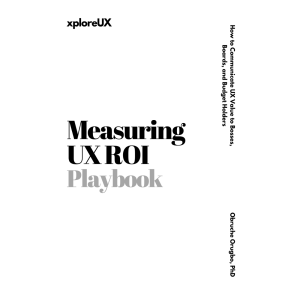
In healthcare, trust is not optional. If a patient doubts an app, they won’t use it, no matter how many features it has. For health-tech managers, building patient trust in health-tech UX is the foundation for adoption, retention, and better outcomes. Yet many apps lose that trust through design missteps.
This article explains why patient trust in health-tech UX often fails, the mistakes that cause it, and the practical fixes that restore confidence. With AI tools to detect friction and human expertise to guide tone, health-tech teams can build apps that feel safe, simple, and supportive.
Healthcare apps often launch with detailed onboarding, long forms, and multiple permissions. While developers think this shows professionalism, patients experience it as overwhelming. This erodes patient trust in health-tech UX before the first session.
The fix: simplify sign-up. Use plain language, explain why each detail is needed, and postpone non-critical information. AI can flag where patients drop off, while human testers ensure the flow feels kind, not clinical.
Terms like “contraindications” or “co-morbidities” might be accurate but leave patients lost. Using clinical terms without explanation is a common way apps weaken patient trust in health-tech UX.
Solution: replace jargon with everyday language. Where medical accuracy is essential, add a short, clear explanation. Patients feel included, not excluded, when language respects their understanding. This rebuilds patient trust in health-tech UX without compromising accuracy.
Patients know their data is personal. If your app looks careless with permissions or hides privacy details in fine print, trust vanishes. Weak data design is one of the fastest ways to destroy patient trust in health-tech UX.
To fix this, display security and privacy messages clearly at key points. Show what is collected, why, and how it benefits the patient. AI can monitor behaviour for signs of doubt, while human design ensures privacy explanations feel reassuring. Transparent handling of data is essential to earning patient trust in health-tech UX.
Small fonts, low contrast, and touch targets that are too tiny prevent some patients from using the app at all. Accessibility failures are not just compliance risks; they erode patient trust in health-tech UX.
Practical fixes: larger fonts, voice support, screen reader compatibility, and high-contrast themes. AI can scan for accessibility gaps, but human testers with real needs validate whether solutions work. Accessible design is central to patient trust in health-tech UX.
If a patient cannot easily find appointments, prescriptions, or test results, they lose confidence. Inconsistent layouts and hidden features cause frustration and reduce patient trust in health-tech UX.
Solution: design navigation around patient priorities, not technical categories. Keep menus simple, use familiar icons, and group related tasks. Regular testing ensures the structure feels natural. This clarity directly strengthens patient trust in health-tech UX.
A cold “Error 404” or “Invalid input” feels harsh when patients are anxious about their health. This lack of empathy damages patient trust in health-tech UX.
Instead, use gentle, supportive messages. For example: “We couldn’t connect right now. Please try again, or contact support if you need help urgently.” AI can track where errors happen most often, while human writers ensure the tone supports rather than alienates. Friendly guidance restores patient trust in health-tech UX even when something goes wrong.
Health apps often present dense charts, lab numbers, and complex graphs. While clinicians understand them, patients may not. This data overload harms patient trust in health-tech UX, making people feel lost or even alarmed.
Fix: focus on clarity. Highlight key numbers in plain text (“Your blood pressure is within a healthy range”). Provide the option to see details, but don’t force it. Simple dashboards reassure and rebuild patient trust in health-tech UX.
If an app feels disconnected from doctors, pharmacists, or clinics, patients see it as less trustworthy. A lack of integration undermines patient trust in health-tech UX.
Solution: add links to contact providers, share summaries with clinicians, and clearly explain how the app supports, not replaces, medical advice. This balance reassures patients that the app is part of their care team, building patient trust in health-tech UX.
Patients come from diverse backgrounds. If an app only works in one language or assumes a cultural norm, it risks alienating users. This neglect damages patient trust in health-tech UX.
Practical fix: multilingual options, inclusive imagery, and sensitivity to cultural health practices. AI can translate content, but human review ensures tone and respect. Inclusivity fosters stronger patient trust in health-tech UX.
Nothing undermines confidence like an outdated app with bugs and broken links. Lack of maintenance signals neglect, which quickly reduces patient trust in health-tech UX.
Fix: commit to regular updates, visible improvements, and transparent communication. Share release notes that show active care. Consistency is key to maintaining patient trust in health-tech UX.
AI tools can highlight patterns where patients hesitate, abandon, or complain. But AI alone cannot build trust. Human designers add empathy, tone, and judgement. Together, AI and people can prevent and repair patient trust in health-tech UX.
For example, AI might show that older patients abandon sign-up forms at a higher rate. Human researchers can interview them and learn that font size is the issue. The combination ensures changes address real concerns and restore patient trust in health-tech UX.
Day 1–2: Review onboarding forms. Remove non-essential fields.
Day 3–4: Replace medical jargon with plain explanations.
Day 5–6: Audit accessibility. Increase font size and test with screen readers.
Day 7–8: Add supportive language to error messages.
Day 9–10: Simplify dashboards by highlighting one key metric.
Day 11–12: Add clear privacy explanations on data screens.
Day 13–14: Set up a patient test group for feedback.
Follow this plan and you’ll resolve many of the most damaging patient trust in health-tech UX issues.
A digital therapy app saw patient engagement drop within the first week. AI analysis revealed most users abandoned sign-up after filling two screens. Follow-up interviews showed patients felt forms were too personal too soon. By reducing required fields, adding a privacy reassurance message, and enlarging text, the app restored confidence. Within three months, engagement rose by 30%. The key was addressing weak patient trust in health-tech UX at the very start.
Trust is the currency of healthcare. Without it, adoption stalls and outcomes suffer. The good news is that many of the issues that erode patient trust in health-tech UX are fixable: complex onboarding, jargon, poor accessibility, weak reassurance, and lack of integration.
By combining AI-powered insights with human-centred design, health-tech teams can build apps that feel safe, simple, and supportive. When patients trust your app, they not only use it — they rely on it.
At xploreUX, we help health-tech managers detect trust gaps and close them fast. Book your free AI-enhanced UX audit today to see where patient trust in health-tech UX can be strengthened in your product.





